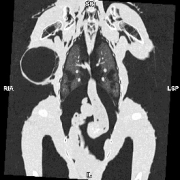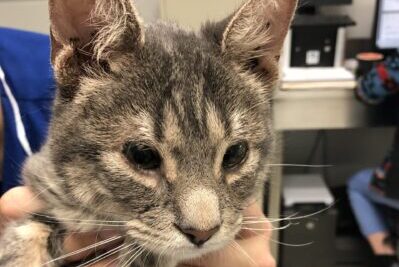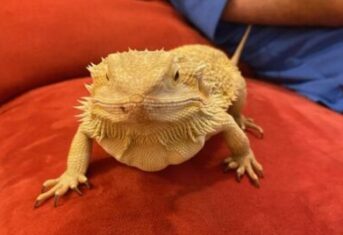Ruptured Air Sac: A Unique Bird Disease

Ruptured Air Sac: A Unique Bird Disease
In 1984, The Animal Medical Center established one of the first Avian and Exotic Pet Services in a veterinary specialty hospital. At that time, the patients seen by the Avian and Exotic animal veterinarians reflected the most popular exotic pets such as ferrets, iguanas, and exotic cats. Over the years the popularity of various pets has waxed and waned, including the rise and fall of the hedgehog, sugar glider, prairie dog, and an occasional frog.
But the presence of birds in our waiting room has been a constant.
Raquel is a talkative blue and gold macaw that is at least 27 years old. She came to see Dr. Katherine Quesenberry for a dime-sized swelling in her axillary area (equivalent to our armpit) between the base of her wing and flank. Dr. Quesenberry suspected a ruptured air sac and scheduled a CT scan to investigate further.
Evolution made birds lightweight for flying. To lighten their bones, some bones contain air (pneumatic bones) as part of their respiratory system. Like reptiles and mammals, birds also have lungs, but bird lungs function differently than ours. With each breath, our lungs fill and empty with air due to movement of the diaphragm. Birds lack a diaphragm, and air moves through the lungs and into and out of the air sacs in two cycles as their sternum expands and contracts with each breath. While air is in the lungs, exchange of oxygen and carbon dioxide occurs. The air sacs help keep birds “light as a feather” and buoyant for flight.
Even though The AMC’s 64-slice CT scan is lightning fast, general anesthesia is required for the procedure. The bird’s unusual respiratory system makes anesthesia a greater challenge than in dog and cat patients. While birds are under anesthesia, we assist their breathing to prevent a build up of anesthetic gases in their air sacs. The advantage that birds have over mammals is that because their respiratory cycle is so fast, they wake up from anesthesia rapidly once the anesthetic gas is discontinued.
On the right you see a reconstructed image of Raquel from her CT scan. Although you can’t see it, her head is at the top, legs at the bottom. The image clearly shows the abnormal air sac exactly as the examination described it, under the right wing. The image is reversed and the right side is shown on the left.
The cause of ruptured air sacs is unknown; even so, they can be successfully treated. A small stent was sutured into Raquel’s ruptured air sac to remove the accumulated air. A follow-up visit showed resolution of the swelling. Raquel is now doing well and hopefully will stay in good health for at least another 27 years!
Photo: Photo of Raquel courtesy of Lynne Freeman-Gassem
_______________________________________________________
This may also be found in the Tales from the Pet Clinic blog on WebMD.com.
For over a century, The Animal Medical Center has been a national leader in animal health care, known for its expertise, innovation and success in providing routine, specialty and emergency medical care for companion animals. Thanks in part to the enduring generosity of donors, The AMC is also known for its outstanding teaching, research and compassionate community funds. Please help us to continue these efforts. Send your contribution to: The Animal Medical Center, 510 East 62nd Street, New York, NY 10065. For more information, visit www.amcny.org. To make an appointment, please call 212.838.7053.


































